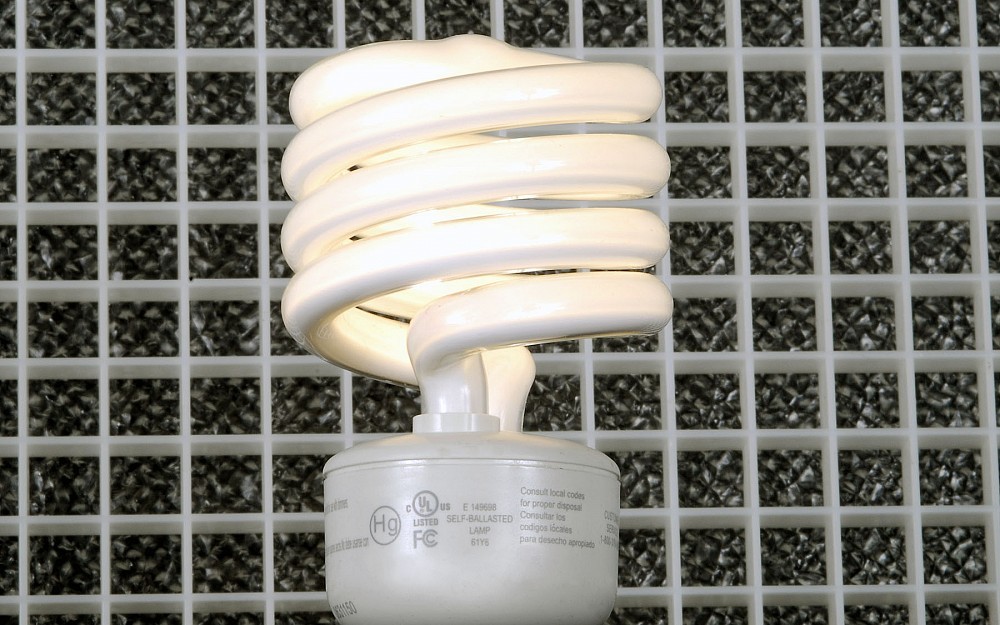
Caution, Proper Disposal Key When Using Compact Fluorescent Lighting
CincinnatiIn an effort to do good for the planetand save a few bucks on energy billsmany consumers are making the switch from incandescent to compact fluorescent lighting (CFL) in their homes and businesses.
CFLs are high-efficiency bulbs that contain a small amount of mercury sealed in glass tubing.
The U.S. Environmental Protection Agencys (EPA) estimates that Energy Star-approved CFLs use up to 75 percent less energy than traditional incandescent light bulbs and last up to 10 times longer. They do, however, contain some mercury and require special disposal that not everyone may be aware of.
There is serious concern over improper disposal and the potential cumulative effects of mercury from these bulbs being placed in our landfills, says Kim Dietrich, PhD, professor of environmental health at the University of Cincinnati (UC) and an internationally recognized expert on heavy-metal exposure. Many citiesincluding Cincinnatiare now offering recycling programs for CFLs, and consumers need to take advantage of them.
A small amount of metallic mercury, an element found naturally in the environment, is used to create energy to illuminate CFLs. No mercury is released during normal use of the high-efficiency bulbs, but it can become a vaporabsorbable through the lungsif the bulb is broken. Once in the body, mercury can stay in the brain for a long period of time and has been linked to impaired cognitive function.
Dietrich says if consumers take some common-sense precautions, the cost- and energy-saving benefits outweigh the very minor health risks associated with consumer CFLs.
CFLs contain extremely small amounts of mercury that will have no health effect on consumers if they are used and disposed of properly, he explains. In fact, one CFL contains 100 times less mercury than a single dental amalgam filling or old-style glass thermometer.
National lighting companies such as Philips Lighting are pushing to rid U.S. retail stores of incandescent bulbs by 2016 in an effort to reduce global warming, according to recent news reports.
The EPA recommends the following steps to clean up a broken fluorescent bulb:
- Open a window and leave the room for at least 15 minutes. This will allow the mercury vapor to dissipate and reduce the risk of inhaling dangerous fumes.
- Using a stiff piece of paper and wearing disposable rubber gloves, scoop up the glass fragments and place them in a sealed plastic bag. Wipe the area clean with paper towels or disposable wet wipes and put them in the plastic bag. Do not use a vacuum or broom to clean up the broken bulb on hard surfaces.
- Place all cleanup materials in a second sealed plastic bag and take it to a recycling center or place it in an outdoor trash can.
- Wash your hands thoroughly after disposing of the bag.
- If the bulb breaks on a rug or carpet, use the same method mentioned above to scoop up the glass fragments. Use sticky tape to pick up the smaller pieces and powder.
- If vacuuming is still required, wait several hours and then sweep the area. Immediately remove the vacuum bag (or empty and wipe the canister), then place the bag and cleanup materials into two sealed plastic bags.
Hamilton and Butler county residents have access to free CFL recycling through existing household hazardous waste removal programs, which resume later this year.
Specific hazardous waste drop-off days and locations are:
· Hamilton County
Information: (513) 946-7700
Collection available: March 1Nov. 22, 2008
Environmental Enterprises, Inc. Environmental Enterprises, Inc.
4650 Spring Grove. Ave.
10163 Cincinnati-Dayton Rd.Tuesdays, 2 p.m. to 6 p.m. Wednesdays, 2 p.m. to 6 p.m.
Saturdays, 9 a.m. to 1 p.m.
· Butler County
Information: (513) 887-3066
Collection available: June 5Sept. 25, 2008
Environmental Enterprises, Inc.
10163 Cincinnati-Dayton Rd.Thursdays, 2 p.m. to 7 p.m.
In addition to CFLs, residents can drop off paint, pesticides, fertilizers, lawn/pool chemicals, cleaners, prescription drugs, household/auto batteries, fire extinguishers, propane tanks, mercury, gasoline, motor oil, antifreeze, thermostats and smoke alarms. Proof of residency such as a drivers license or utility bill is required.
Environmental Enterprises accepts drop-offs from anyone throughout the year; however, there is a fee for disposal outside the times listed above.
For more information on purchasing and disposing of CFLs, visit www.energystar.gov.
Tags
Related Stories
Department of Urology established at UC College of Medicine
July 8, 2024
The Department of Urology became the College of Medicine’s 24th academic department on July 1.
UC study: Brain organ plays key role in adult neurogenesis
July 2, 2024
The University of Cincinnati has published research in the Proceedings of the National Academy of Sciences that found the choroid plexus and cerebrospinal fluid play a key role in maintaining a pool of newly born neurons to repair the adult brain after injury.
Put down that beer; it's not a tanning lotion
July 1, 2024
The University of Cincinnati's Kelly Dobos joined WVXU's Cincinnati Edition to discuss what's fact and what's myth when it comes to sunscreen use, different kinds of sunscreen and a social media recommendation to use beer on your skin to help get a tan.
